#Greek in Sicily
Photo

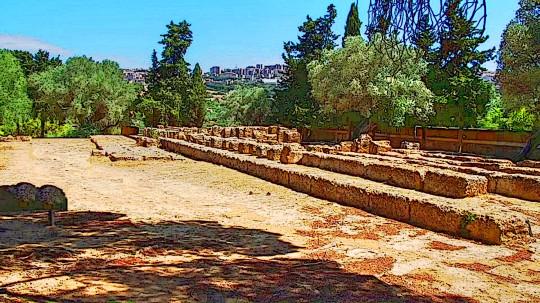


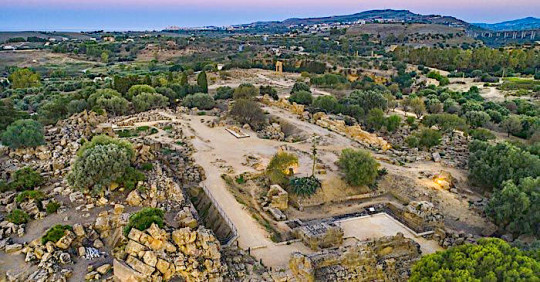
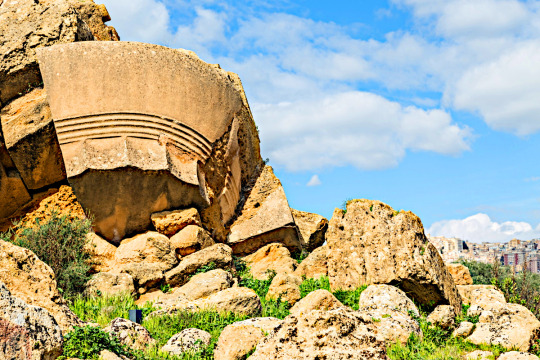

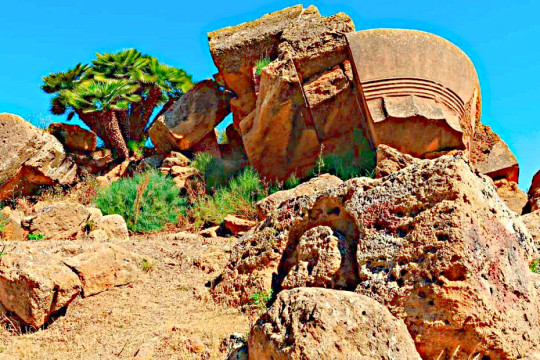
Otto templi vi sono in quel di Agrigento, ognuno nell’antichità dedicato ad un dio potente e generoso. Io li visito chiedendo il perché, i segreti e la magia di quanto chiamano amore (da un idea di @aphroditeurania22).
Υπάρχουν οκτώ ναοί στον Ακράγα, ο καθένας στην αρχαιότητα αφιερωμένος σε έναν ισχυρό και γενναιόδωρο θεό. Τους επισκέπτομαι ρωτώντας γιατί, τα μυστικά και τη μαγεία αυτού που λένε αγάπη (από μια ιδέα της @ Aphroditeurania22).
TEMPIO DI GIOVE - OLYMPIEION - Tra tutti quelli a cui questi templi sono dedicati, il tuo è il più possente, degno del padre della forza, del sacerdote della giustizia, unico signore della bellezza. Tra tutti gli dei la tua parola è l’ultima e scrive la legge, la norma a cui noi umani e gli immortali tuoi figli, dobbiamo solo obbedienza. Tra tutti i tuoi poteri, quello che ti definisce e ti rende invincibile, il potere con cui domini uomini e natura è il vivere al di là del tempo. Eppure, per noi uomini, blasfemi e corrosi dai difetti dell’ego e dalla provvisorietà della carne, vi è un Dio che della sua fragilità del suo mutare con il tempo e nel tempo morire e rinascere, cambiare e restare immutato, indebolirsi e rafforzarsi, di questa sua tangibile limitata esistenza, ha fatto il suo potere più grande. Un Dio che, più veloce della tua saetta, può rubarci i suoi doni da un attimo con l’altro, rendendoci folli a ragione di un tradimento e spingerci noi stessi a tradire senza remore e vergogna. Un Dio che ci dona una felicità grande per quanto è grande il mare, o che può renderci aridi ed arsi di vita come un fiume asciugato e imbiancato dal sole d’agosto. Un dio per cui rinunciamo a noi stessi, rinneghiamo il nostro egoismo e doniamo tutto quello che è in nostro potere pur di far vivere e crescere il suo dono all’infinito. È questo Dio che ci rende dei e schiavi, questo Dio che gli uomini chiamano amore, che ora è piacere della carne, ed ora è un legame sottile e forte come i fili di seta, fatto di sguardi, di carezze ed attenzioni, che trasformano passioni e carnalità in un legame intenso, immenso, invisibile, fragilissimo ed eterno anche se l’eternità non è dell’amore, ma l’amore rende ogni attimo eterno, ogni assenza una voragine infinita, ogni abbraccio un innesto di fiore su fiore a dare una nuova vita, a donare quei colori e profumi che i due fiori da soli non potrebbero mai avere.
Tutto questo è quanto proviamo di questo nostro essere che è fragile e delicato, che vive come alcune farfalle un solo giorno o mille infinite estati e benché siamo mortali e senza alcun potere, la bellezza dell’amore cancella ogni invidia della tua divinità, ci fa trascurare l’eternità ed ogni altro paradiso, parchè è l’unica luce che illumina le tenebre dell’anima, l’unica debole fiamma che riscalda la gelida provvisorietà della nostra carne. La fortezza sempre assediata dalle nostre debolezze e dalla seduzione del piacere, dall’arroganza del nostro ego e le cui mura sono salde quanto la forza con cui ci doniamo a chi amiamo.
Così come la tua immortalità ti rende padrone di ogni dio, questa immensa fragilità, ci rende dei e provvisori perché ci dona il loro potere sovrumano, ci santifica in ogni dolore che proviamo, giustifica i silenzi della vita che non può contenere o sapere, la gioia che proviamo. È questa fragilità, l’unica forza che abbiamo, l’unica ambrosia con cui ci nutriamo, la delicata, labile, provvisoria eternità che ci permette di vivere di giorno e di accettare le notti e l’assoluto nulla di cui sono gentili messaggere.
22 notes
·
View notes
Text
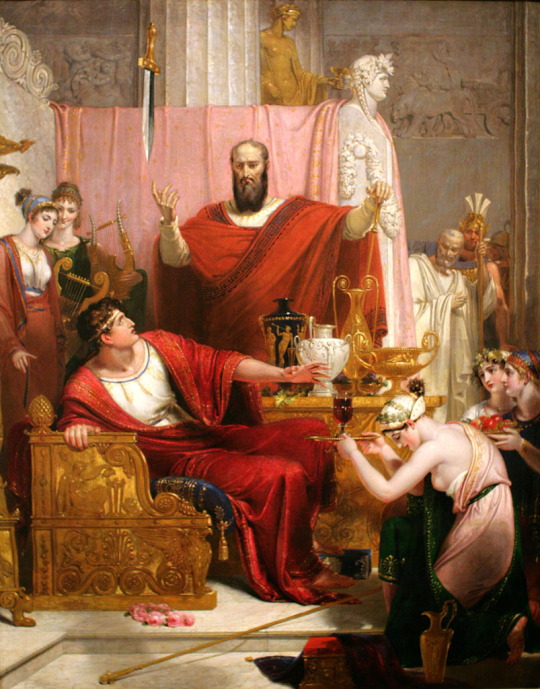
The Sword of Damocles by Richard Westall
#damocles#sword#art#richard westall#neoclassicism#neoclassical#dionysius i#dionysius#king#courtier#power#peril#fear#allusion#sicily#syracuse#magna graecia#ancient greece#ancient greek#cicero#maidens#swords#horsehair#court#dionysius i of syracuse#mediterranean#classical antiquity#timaeus of tauromenium#europe#european
103 notes
·
View notes
Text
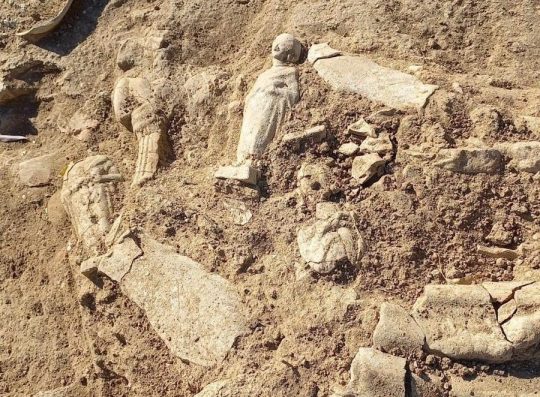
Rich Votive Deposit Discovered in Sicily's Valley of the Temples
At least sixty terracotta figurines, female protomes, and busts, oil lamps, and small vases, a rich votive deposit of bronze fragments were found in the Valley of the Temples in Agrigento, on the southwest coast of Sicily.
The objects were found in House VII b, which forms part of the housing complex north of the temple of Juno. The campaign is fully funded and supported by the Sicilian Region through the Valley of the Temples Archaeological Park, directed by Roberto Sciarratta, and is led by archaeologist Maria Concetta Parello.
In an announcement published by the Sicilian Region Institutional Portal: “The findings allow us to understand the dynamics of the destruction of Agrigentum in 406 BC by the Carthaginians, when the inhabitants had to flee in exodus towards the city of Gela.”

The votive deposit, which would appear to have been arranged above the destruction levels of the house, may tell the story of the time when its objects were recovered by the Akragantines after the destruction. To define with certainty the function of the interesting deposit will require further research, paying close attention to the stratigraphic connections between the deposit and the living and abandonment levels of the house.
The Valley of the Temples forms part of the ancient city of Agrigentum, situated in the province of Agrigento, Sicily. Since 1997, the Valley of the Temples (covering 3212 acres) has been included in the UNESCO World Heritage List.
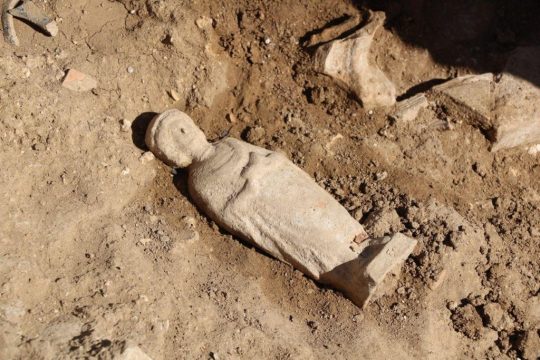
According to the Greek historian, Thucydides, Agrigentum was founded around 582-580 BC by Greek colonists from Gela in eastern Sicily, with further colonists from Crete and Rhodes. It was routed by the forces of Carthaginian general Himilko in 406 B.C. Agrigento’s residents fled to nearby Gela when Himilko sacked their city, but then he took Gela too. All of the Greek colonies on Sicily fell to Himilko and were made vassals of Carthage. Punic primacy would not last long, however. Timoleon of Corinth defeated Carthage in Sicily and liberated the Greek cities in 399 B.C.
By Leman Altuntaş.
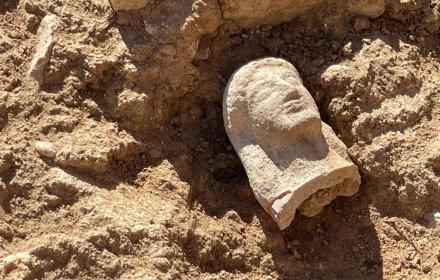
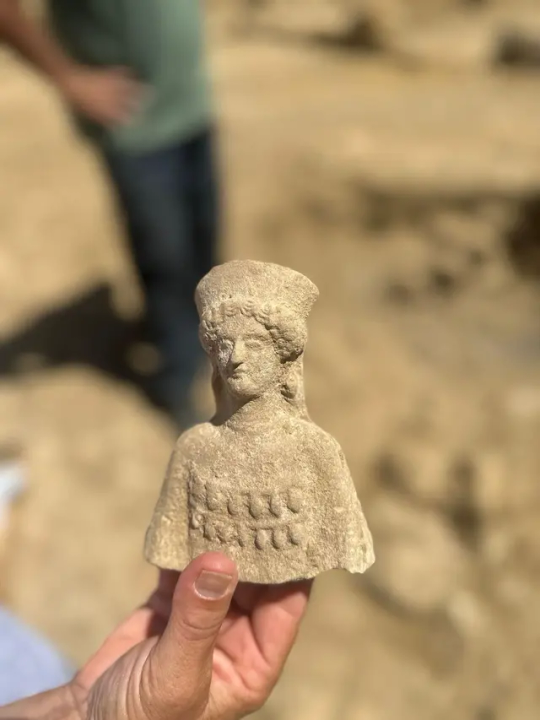

#Rich Votive Deposit Discovered in Sicily's Valley of the Temples#Valley of the Temples in Agrigento#temple of Juno#terracotta figurines#ancient artifacts#archeology#archeolgst#history#history news#ancient history#ancient culture#ancient civilizations#ancient sicily#ancient greece#greek history#greek art
271 notes
·
View notes
Text
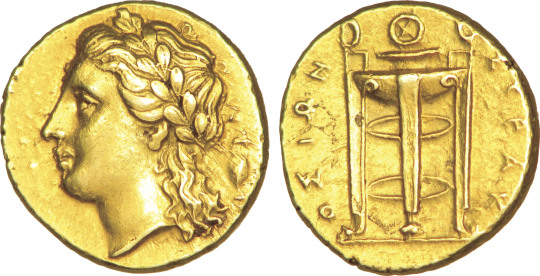
Coin minted from electrum (a naturally occurring gold-silver alloy) by the Sicilian polis of Syracuse between ca. 310 and 305 BCE, when it was under the sway of the expansionist tyrant Agathocles. On the obverse, the head of Apollo, shown with his characteristic long hair; on the reverse, the Delphic tripod, atop which the Pythia sat when delivering oracles. Photo credit: CGB Numismatique Paris.
#classics#tagamemnon#Ancient Greece#Magna Graecia#Sicily#Ancient Sicily#Hellenistic period#ancient history#Greek religion#Ancient Greek religion#Hellenic polytheism#Apollo#God Apollo#art#art history#ancient art#Greek art#Ancient Greek art#Hellenistic art#Sicilian art#coins#ancient coins#electrum#Greek coins#Ancient Greek coins#numismatics#ancient numismatics
162 notes
·
View notes
Text

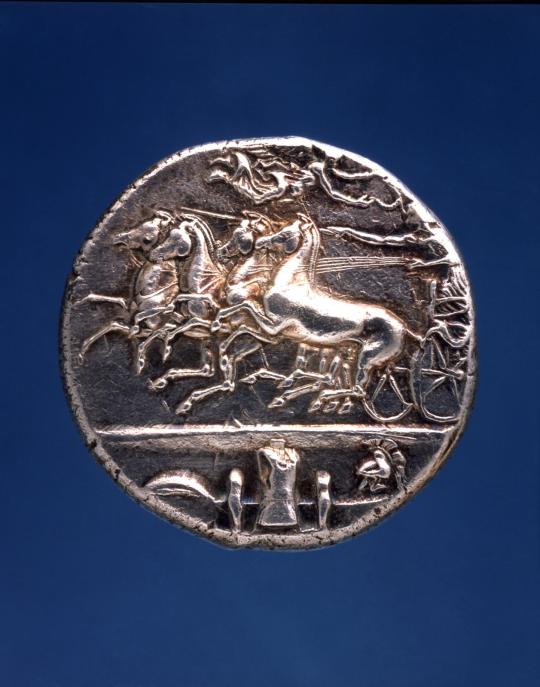
Silver decadrachm from the Greek city of Syracuse in Siciliy, circa 405-345 BC
from The Penn Museum
159 notes
·
View notes
Text
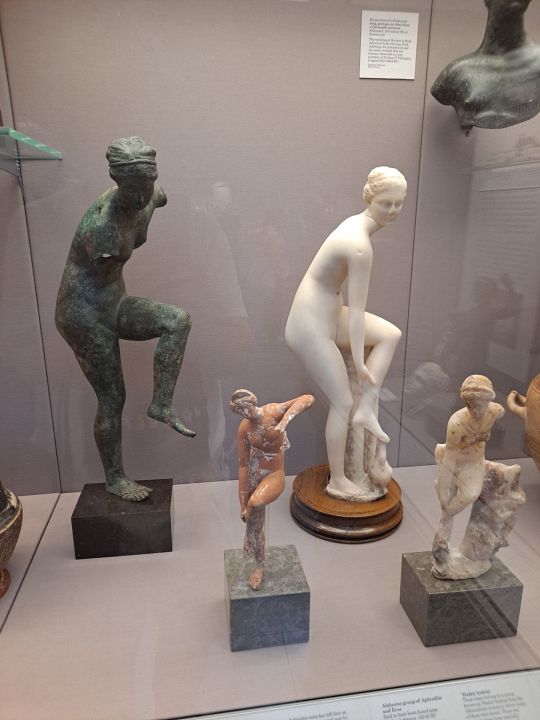

Aphrodite adjusting her sandal
1st-2nd century BCE
British Museum
London, July 2022
#Aphrodite#goddess#statuette#ancient#Greek#art#bronze#marble#terracotta#alabaster#2nd century BCE#1st century BCE#Sicily#Crete#british Museum#my photo
595 notes
·
View notes
Text
In the forgotten tales of Magna Graecia that helped shape this captivating Mediterranean region, ancient Greek colonies thrived amidst battles, innovations, and a cultural fusion echoing through time.
Faced with overpopulation, Greece sent out settlers, leading to a strategy of colonization driven by necessity. These independent city-states rose to power, only to engage in fierce wars among themselves. The cultural fusion of Magna Graecia became a melting pot where Greek traditions intertwined with the essence of indigenous Italy, seen in artistic, architectural, and philosophical marvels that emerged from this dynamic interplay and left an indelible mark on the Mediterranean landscape.
From the dawn of Greek colonization to the clash with the mighty Roman Empire, Magna Graecia's epic journey, revealing a rich tapestry of battles, alliances, and a unique cultural synthesis, continues to resonate in the vibrant towns and cities of this historically rich region.
20 notes
·
View notes
Text
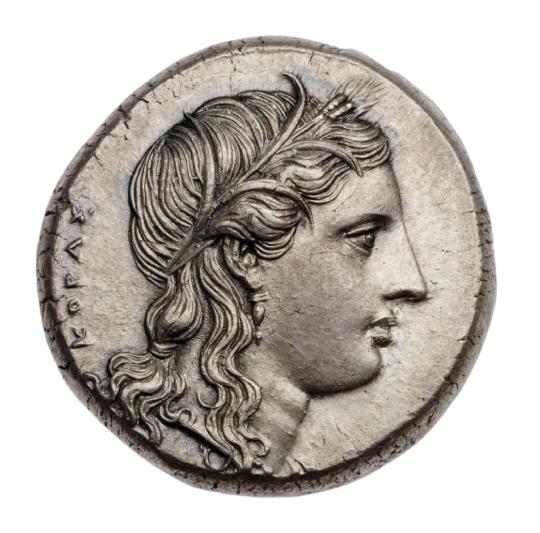
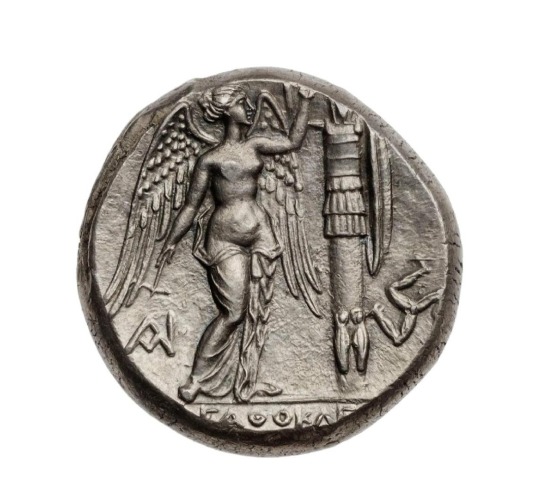
~ Tetradrachm of Syracuse with head of Persephone, struck under Agathokles.
Culture: Greek
Period: Early Hellenistic
Date: 310–305 B.C.
Mint: Sicily, Syracuse
Medium: Silver
#ancient#ancient art#history#museum#archeology#ancient history#greek#ancient greek#tetradrachm#persephone#Agathokles#syracuse#Hellenistic#silver#sicily#310 b.c.#305 b.c.#Sicily
715 notes
·
View notes
Text

Ruins of the Greek theatre in Taormina, Sicily, Italy
Italian vintage postcard
#tarjeta#italian#postkaart#sepia#ruins#historic#greek#photo#sicily#postal#italy#briefkaart#photography#vintage#ephemera#ansichtskarte#old#taormina#postcard#postkarte#carte postale#theatre
12 notes
·
View notes
Text

“the bourbon two sicilies are basically social climbers, they were deposed and still call themselves princes and princesses. Even the Greek royal family has more royal blood than them, although it is also embarrassing to be royal highnesses in a country that is no longer a monarchy.” - Submitted by Anonymous
28 notes
·
View notes
Photo
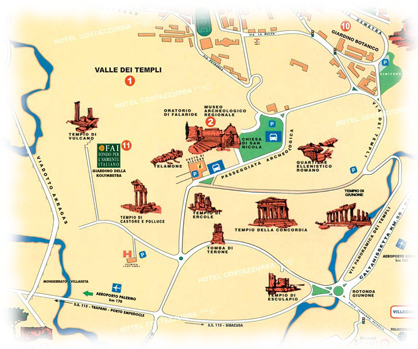
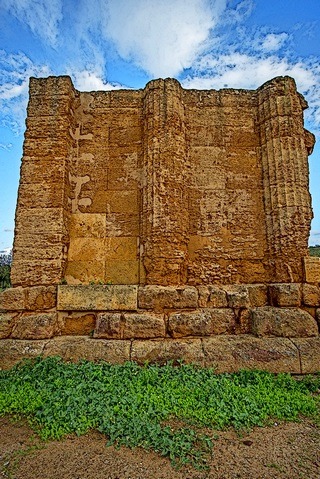
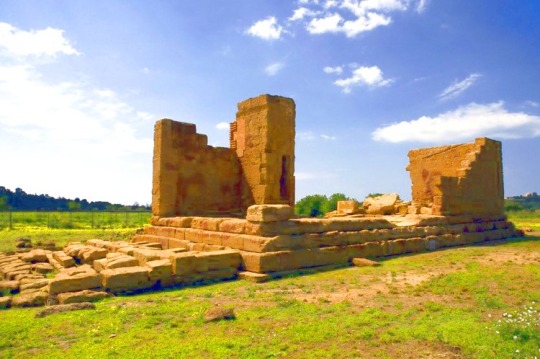
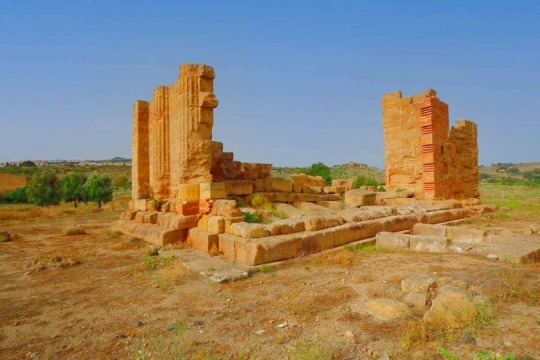
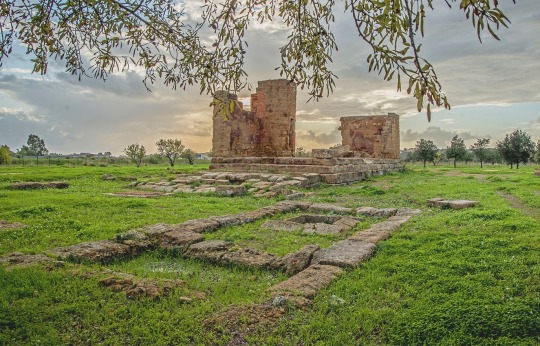
Otto templi vi sono in quel di Agrigento, ognuno nell’antichità dedicato ad un dio potente e generoso. Io li visito chiedendo il perché, i segreti e la magia di quanto chiamano amore (da un idea di @aphroditeurania22).
Υπάρχουν οκτώ ναοί στον Ακράγα, ο καθένας στην αρχαιότητα αφιερωμένος σε έναν ισχυρό και γενναιόδωρο θεό. Τους επισκέπτομαι ρωτώντας γιατί, τα μυστικά και τη μαγεία αυτού που λένε αγάπη (από μια ιδέα της @ Aphroditeurania22).
Tempio di Ascelpik- Esculapio il mortale che curava gli eroi e resuscitava i morti. Ναός του Ασκληπιού του θνητού που θεράπευε ήρωες και ανέστησε νεκρούς.
A te medico degli dei e dei medici il dio, vengo per primo a chiedere: esiste una cura che guarisca dall’amore? Esiste qualche erba esotica, qualche droga sottile e potente, che renda la propria mente libera, finalmente, da quel pensiero invincibile che la nostra ragione, le voglie che fa nascere, la vita stessa, incatena agli occhi di qualcuno? Un antidoto, un potente vaccino che eviti che il tuo sguardo la cerchi tra le ombre del giorno perché senza lei il tuo tempo è solo un lago immobile e freddo, una pagina bianca, un campo abbandonato, dimora di serpi e fiori velenosi.
Se tu potessi darmi, tra le erbe di cui sai i segreti poteri, un’erba sconosciuta che sia una cura salvifica tale da rendermi un mare, si un mare padrone di se stesso, un infinito oceano sovrano e senza legami con alcuno. Un infinito libero mare, con le sue burrasche immense a cui nessuno possa opporsi, con i suoi mostri liberi di scorrere negli oscuri abissi, ma libero, infine e unico signore del suo destino. Tu che conosci ogni ignoto muscolo, ogni ghiandola del corpo umano, dimmi in quale pezzo di carne è nascosto nel mio corpo l’amore per lei e per lei sola, perché io possa amputarlo e chirurgicamente, dolorosamente, salvarmi dal dipendere da lei, da vederla sorgente del mio piacere, sole attorno a cui ruotano i miei desideri, bosco senza fine dove ogni albero maestoso è un mio pensiero per lei. Lei unica mia forza e calore, complice di ogni gioia, unica differenza tra solitudine e contemplazione.
Esiste una pillola, un estratto, un infuso figlio della saggia natura, che cancelli l’amore e lo renda quel ridicolo sogno che per il mondo è, ma che per me non è. Per me, a causa sua, non è. Io speravo che il tempo, che consuma le montagne e sposta le stelle, potesse porre fine a questa dittatura invincibile, potesse rendere ridicole le parole con lo sfiorire dei corpi, potesse essere la cura che cancella il suo ricordo e spegne ogni bisogno, così che lei non sia più le stagioni che devo vivere e nel mio cuore, lei non danzasse più i suoi balli solari, non santificasse più quella vita che senza lei non può esistere.
Speravo che il tempo potesse rendere il suo corpo senza più alcuna seduzione, che le rughe coprissero le sue labbra cancellando ogni sorriso, che i suoi occhi si stringessero per cercar di vedere e mostrare quanto il tempo in essi ha reso offuscato e incerto. Invece anche così io so che l’amerò perché i suoi giorni si legano ai miei come gli anelli di una catena ed in lei io vedo i miei solstizi passati e futuri, vedo l’orizzonte verso cui ogni giorno navigo, il porto in cui mi ormeggio per li restare ed il mondo dimenticare.
Perché lei è la mia prigione e la mia unica libertà, è il verso che nasce e quello che lo segue rimato e sonoro, è la stella polare a cui i miei pensieri guardano nello scegliere la rotta dei miei desideri, la foce invisibile verso cui la mia vita scorre. Dammi un rimedio, un sollievo, tu che dei dottori sei il dio, dammi una cura che la cancelli dalla mia memoria e mi ridoni il tutto a cui mi ha sottratto, rendendosi lei sola, la mia unica vita, l’unica stella che vorrei rubare al cielo prima di morire.
14 notes
·
View notes
Text

View of part of the ruins of the Temple of Juno Lacinia in Agrigento
by Louis-François Cassas
#louis françois cassas#art#ruins#architecture#landscape#temple#temples#temple of juno lacinia#agrigento#sicily#mediterranean#magna graecia#europe#european#classical antiquity#ancient greek#ancient greece
74 notes
·
View notes
Text
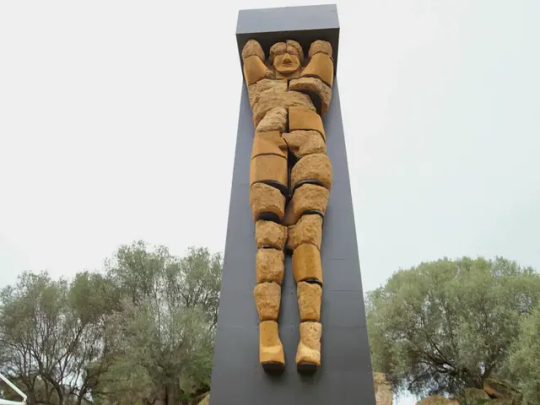
A Statue of Atlas Emerges From the Ruins of Sicily’s Ancient Temple of Zeus
In the fifth century B.C.E., 38 looming sculptures of the Titan stood guard at the structure.
After 20 years of restorations, a 26-foot-tall statue of Atlas is once again standing guard at the ancient Temple of Zeus in the city of Agrigento (once called Akragas) in Sicily.
The statue, created in the fifth century B.C.E., was one of roughly 38 similar Atlas monuments built into the temple. They stood in a line between columns with their arms raised, appearing to hold the holy structure upright.
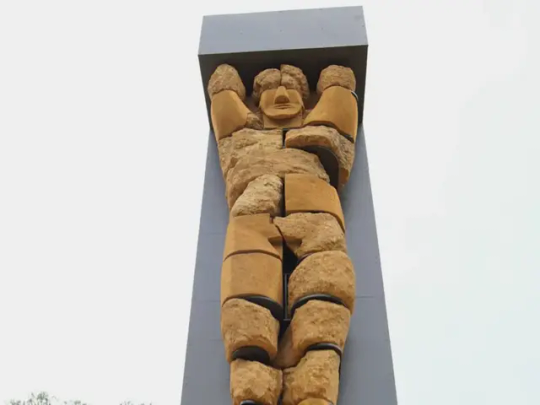
In Greek mythology, Atlas was a Titan who rebelled in a war against Zeus. As punishment, he was forced to hold up the sky on his shoulders. Unlike the mythological Atlas, however, the stone likenesses were unable to hold up Zeus’ temple forever. Ultimately, earthquakes and other events caused the structure to crumble.
For many years, pieces of the statues were scattered around the site amongst other ancient ruins. In 1812, Charles Robert Cockerell, a prominent British architect, first identified one of the Titan’s giant sandstone heads during a visit to Agrigento. A century later, in 1920, archaeologist Pirro Marconi became the first person to attempt to reconstruct one of the Atlases, which is now housed in the Archaeological Museum of Agrigento.
The seeds of the current project began in 2004, when the Valley of the Temples park conducted a sweeping research campaign at the site. Experts cataloged 90 fragments from at least eight Atlas statues.
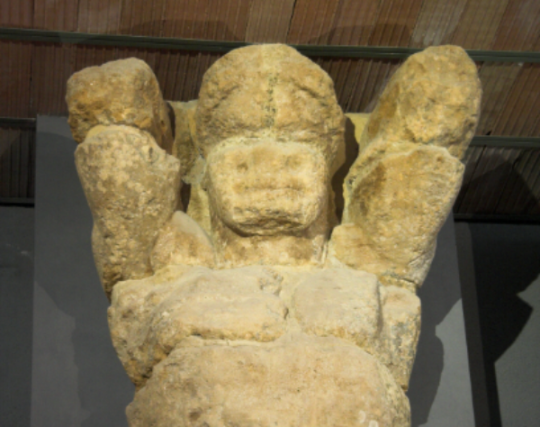
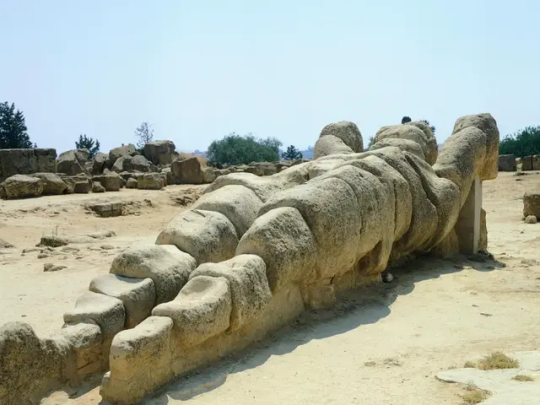

“The idea was to reposition one of these Atlases in front of the temple so that it may serve as a guardian of the structure dedicated to the father of the gods,” Roberto Sciarratta, the director of the Valley of the Temples park, tells the Guardian’s Lorenzo Tondo.
But rebuilding Atlas in a standing position was particularly challenging, as researchers couldn’t simply stack the pieces of the statue on top of one another. Instead, they attached the fragments to metal shelves, which are supported by a larger metal structure.
The restoration has faced scrutiny ever since officials first announced it several years ago.
“No archaeologist would endorse the use of ancient sculpture, no matter how fragmentary, to create a modern sculpture, even if the purpose is to highlight the site’s antiquity,” C. Brian Rose, an archaeologist at the University of Pennsylvania, told the New York Times’ Franz Lidz in 2020.
But officials like Renato Schifani, the Sicilian governor, think that the statue’s resurrection is a commendable feat.
“Today is an important day for Agrigento and for all of Sicily,” says Schifani in a statement, per Google Translate. “This stone giant of ancient Akragas, which after many years of studies and research we can observe in its natural position, is the heart of an important museum project of the entire area of the Temple of Zeus."
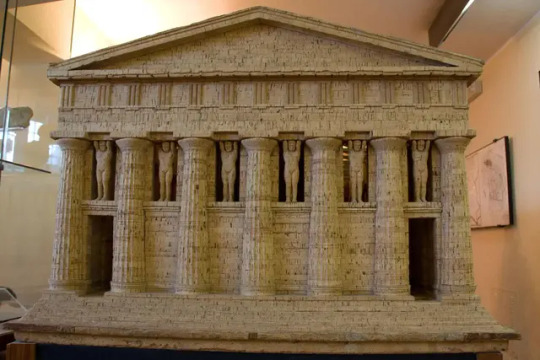
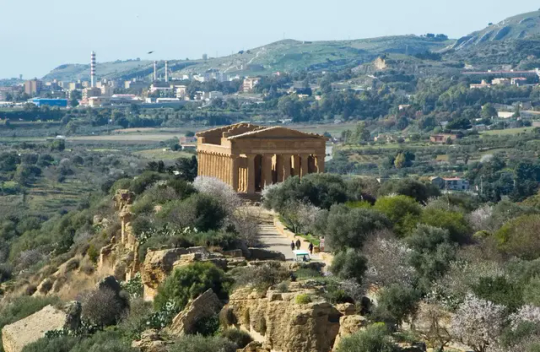
By Julia Binswanger.
#A Statue of Atlas Emerges From the Ruins of Sicily’s Ancient Temple of Zeus#Akragas#Agrigento#Sicily#Valley of the Temples park#temple#Temple of Zeus#ancient artifacts#archeology#archeolgst#history#history news#ancient history#ancient culture#ancient civilizations#roman history#roman empire#greek mythology
70 notes
·
View notes
Text
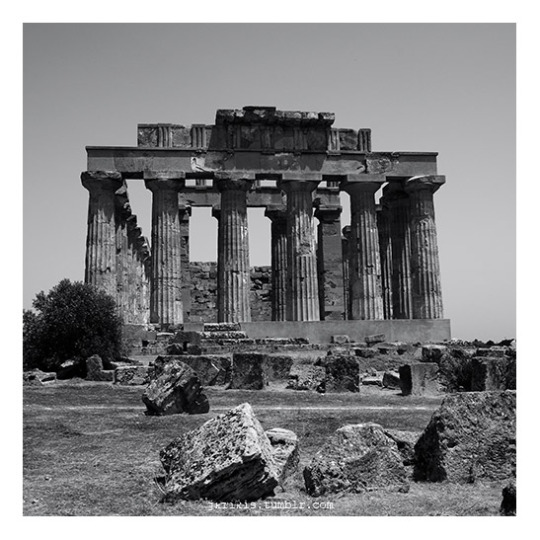
selinunte/sicily series 182
© 2022 Yiannis Krikis
#selinunte#lensblr#lensculture#fine art photography#photographers on tumblr#temple#greek#black and white#sicily#italy#ancient
98 notes
·
View notes
Text

Mediterranean islands
#me#gay#boi#gay boi#gayboi#gayboy#gay boy#gaytwink#twink#gay twink#greek gods#Sicilia#sicily#italy#italian islands#islands#island#mediterranean#Mediterranean sea
455 notes
·
View notes
Text

The myth of Plutos and Proserpina is a story that has been through multiple major misinterpretations. People often spread wrong information about it or subject it to unhealthy modernizing under different reasonings, so I decided to create a masterpost of sorts regarding everything that concerns the story of abducted Proserpina and wrathful Demeter.
I am covering all possible variations of the myth that I could find, including the Roman, Greek, and the Sicilian one, as Proserpina is often said to be native to Sicily; or her abduction story happens there. These stories present the myth in the variety of interpretations that can't be ignored regardless.
There's no "right" or "wrong" way to read the actual story, nor is there any morally correct one.

The origins of the Goddess Proserpina may lay in Sicily, which was colonized by Greece in the 8th century BC thus resulting in a lot of Sicilian traces of the story being lost. The local version of the myth isn't spoken about much, as it is overshadowed by the Greek narration, though I do find it fascinating and I believe we can't overlook it.
The Sicilian version of the myth does portray the descent of a girl named Proserpina (from proserpere, "to creep forth" - about growing grain) in the Underworld. There are multiple stories on how She ends up in the realm of the dead, none more correct than others: some say that She wanders in Plutos' realm on Her own accord, following Her own sense of curiosity as She sees a beautiful narcissus growing. Some say that He does take Her, but allows Her to leave when He sees Her distress and learns of Her Mother's worry. Some sources say that She is allowed to leave on Her own whereas some sources claim that Plutos needs to be negotiated with first. The nymphs are said to accompany Her in some stories whereas in some She is completely alone. The nymph Cyane, notably, is sometimes said to even protect Proserpina from the God.
I believe for some examples of the Ancient consensual myth, you may look into Lokri reliefs.
Regardless, down there, having met the God of the Dead who is fascinated with Her, She is faced with the choice to leave or to stay, and She decides to leave. As She passes through the gardens in the higher layers of the Underworld, alone or with a guide, right before She can leave, She grows curious and tastes a pomegranate, swallowing six seeds. It is believed that eating anything in the realm of the dead gets you trapped in there, and that's what happens to Her.
Proserpina is not forced to stay by Plutos Himself, but She has to stay as Her own curiosity and carelessness get Her trapped under the soil. From that point on, She can only leave for the warmer part of the year and come back for winter
Some stories of the region depict the motif of trickery but it is not as widely prominent as within the contemporary Greek myth.

Diodoros and others see Sicily as the place that first witnessed the manifestation of the Goddess, who gave the people of Sicily wild wheat.
In Sicily, Proserpina was known as Dea di Siciliani, the Goddess of the Sicilians, as mentioned by Apuleius. Sources point out that Her cult greatly resembles that of the local Italic pre-Greek Goddess Primigenia, though much information has been lost. It is possible that Roman Ceres or even Cybele acquired Proserpina-Primigenia's attributes.
Initially, Proserpina was depicted very similarly to the Goddesses Demeter and Hekate, which possibly demonstrates Her agricultural qualities as both of these Deities posses such aspects. Proserpina in Her original depictions carries a torch, perhaps to light Her way in the Underworld the way souls of the dead do, and to represent the connection to agrarian culture.

The "violent version" of the myth of Plutos and Proserpina is a later invention. Authors such as Hesiod in his Theogonia depict the Goddess Persephone, born to Zeus and Demeter only to be later carried away by Plutos.
Depiction of Death as a brutal act of taking is something common in Greek myths where both Plutos and Charon are portrayed riding a chariot and a black mare respectively, moving fast and taking the souls of the dead. Charon has been said to wield a sword and firmly grab the souls one by one, too.
Sicily, to which the cult of Plutos is native, has never portrayed Him as a brutal and unfair King, but rather accepted Death as inevitable even if terrifying the living.
The Greek version of the myth includes violent kidnapping of Proserpina, either via Plutos grabbing Her and taking Her away immediately, or by driving past Her in a chariot tugged by four horses, grabbing Her, and taking Her down. Sometimes He is said to lure Her in with a flower, as She was a curious girl.
Proserpina in the Greek version of the story spends some time in the Underworld, held back by the God. Some stories say that She is there for nine days, some mention a shorter time period. Regardless, during that time, Her Mother Demeter mourns, looking for Her child, and makes cold weather and famine come onto the people.
Zeus, the Sky-Father, is then the one to send messengers or Hermes/Iris to visit His brother and bargain, looking for ways to negotiate with His sibling. Plutos agrees to let the girl go, but right before She leaves, She is forced to eat the fruits of the Underworld during a feast He prepares for Her. In some stories, She does so out of hunger whereas in some, She is tricked into thinking it is safe to do so. Regardless, the Greek myth paints the picture of force, brutality, and deception.

Romans already had their local Goddesses of agriculture, death, and rebirth when the myth of Proserpina came from the far South of the Empire. When the Sicilian Goddess became known to Rome, She quickly merged with the local Deity known by the name of Libera, a female equivalent of another Roman God, Pater Liber. Libera was also once an Italic Goddess, brought into Rome in its early Republican years.
Libera had Her own rituals, rites, holidays, and otherwise presence in the Roman routine life. And while this Goddess has quickly absorbed Proserpina, the latter was still respected as a separate Divinity outside of Rome, in Her place of origin. Roman authors recognize Her as a Sicilian Goddess even if She wasn't prominent in Rome.
As the result of proximity to colonized Sicily and its Italic past, Rome knew of multiple versions of the myth. Writers of the time mention both the Greek, violent, interpretation of the story, and the Sicilian origins of the Goddess and Her myth. For example, in Titus Livius times, we find pieces of Ancient Latin writing that mention both the Eleusinian Mysteries and Misteri di Proserpina. Southern Italian texts speak of the Stygian Proserpina, associated with the cycle of death and rebirth. Rome didn't seem to have a preferred version of the story, as closeness to both Sicilian peoples and Greek borders made it so the Roman Empire became the place where both stories had left an impact. Claudian, for example, spoke on the kidnapping of Proserpina while Ovid referred to Her as a Goddess to be respected (Regina Erebi) while Homer, whose story was known in Rome, called Her "terrible, silent Queen of the Dead".

Regardless of what myth version you decide to follow and believe in, it's important to remember that the myth itself is less so about Proserpina and Plutos, but more so about Demeter, or Ceres.
The wrath of the Goddess is something the Ancients feared. Orphic hymns to Demeter mention Her fury, and many inscriptions of the time paint Her as the Goddess who was incredibly loved by the people while also being terrific in Her anger.
The people of Sicily and Southern Italy, who were among the first to have accepted the cult of Demeter, spoke of Her as a highly respected Goddess terrible in Her rage.
The story of Proserpina can't be analyzed without looking at the figure of Demeter, as She plays a major role in the myth.
Most of the versions speak of the Goddess, enraged and mourning, descending from Mount Olympus and walking among the mortals with a torch in search of Her daughter. She walked far and reached Eleusis, where She hid among the young virgin girls before unveiling Herself and requesting establishment of Her temple and cult in the city. Some say She was testing the local King to see how he'd accept a foreigner. Some say She was watching the local community of young girls before becoming their local protector. It needs to be said that some sources claim that Proserpina's absence made Her mother go on without water and food, the period of abstinence that ended with Her accepting kykeon - strange nutritious mix made of barley flour, water, and mint.
To find Her daughter, the Goddess is said to have requested help of Hekate who helps find one's way in the dark, and Apollo who sees it all from the sky. Some sources mention that prior to the whole event, Astreios, the God of prophecies delivered through astrology, tells Her a prophecy of Proserpina's kidnapping and following birth of Zagreus.
Lastly, the Goddess deals with Zeus who Demeter was enraged with as He allowed the girl to be taken away. Zeus is said to agree to help Demeter after She lays fields barren and leaves people famished, refusing to take up Her Divine duties until Proserpina is back to Her. Hermes is then sent off to negotiate, as He is the God of communication, and He manages to get Plutos to let the girl go. However, here is where the story branches out: some say that She tastes the fruits of the Underworld without Him forcing Her to, some that She is given the seeds/a seed by force, and some that She takes them without knowing what they do - only finding out after the fact when Demeter inquiries if She ate the fruits of the dead.

Many sources speak on Demeter's self-imposed exile as She did not want to share Olympus' plane with other Gods after learning that Zeus allowed Her beloved daughter (in some myths, Her only child) to be taken by Plutos. She spends Her exile in Eleusis, where kind maidens help Her, disguised, and for that She allows Them to built Her a temple, a cult, and, in some myths, returns life into nature, letting crops grow again.
In some versions of the myth, it's Rhea who convinces Demeter to come back, in some it's Iris or Hermes serving as messengers. There are also versions that say Demeter never returns to Olympus, preferring to wander the Earth.
Lastly, the ending of the story differs from source to source, but all equally portray the mother's dismay at having Her child no longer fully in Her care. Sometimes Proserpina is said to have to spend a third of the year underground, sometimes half the year. Some sources speak on Her being guided out of the Underworld by Hermes or Iris, some mention Hecate as Her mistress and patroness. Demeter is said to question whether or not Her daughter has tasted the fruit of the Underworld, and when She admits to it, the mother is in disarray as She realizes Her child is now bound to the soil.
Some sources, such as Pausanias, also speak on Demeter Herself being either assaulted by Neptune or held back by Him while on the search for Her daughter. Some equate Her with Rhea in the myths of Rhea being assaulted by Zeus in the form of a serpent (or dragon). It's important to note that not even all Greek sources believe these stories to be true, so take them as local versions that didn't make it into commonly spread story.
That, with layers of other events such as Her establishing Her Mysteries, multiple cults, and conversing with many Gods on the matter of Proserpina, are signs that the myth is largely a story of a Mother and a Daughter, and not a story of Proserpina and Plutos per se. Marriage did, after all, mean separation of the girls and their mothers, at least in the Ancient world.

The multiplicity of myths of Proserpina might have something to do with how many possible origins of the Deity there are.
In Greece and colonized Sicily Proserpina, Greek Persefona, was known as a Goddess of grain and agriculture, tightly associated with Her mother. In this version of the story, She is the daughter of Zeus and Demeter. Other than that, the Greeks and Sicilians either believed Her to be the daughter of Demeter and Poseidon, or daughter of Styx. As the Stygian Goddess, venerated in Sicily, She was seen as a punishing force.
Locality of the cult is a matter of many discussions as we have found evidence of there being local cult establishments in Eleusis, Ermione, Feneo, Arcadia, Knossos, Enna, Ipponio, and Syracuse. It might have been established in the Ancient province of Morgatina, Lake Pergusa, and more.
In Sicily, the Goddess had a cult connected to agriculture and marital ceremonies. For examples, theogamy, marriage to a God, and anacaliptery, gifts to the newlyweds, were common rituals to honor Her. These were festivals celebrated in summer and winter, too.
Most sources say that the origin of Proserpina is Sicily, some claim it's the South of Italy, in the region of modern Taranto (Tarentum back then). Some sources say that after creation, the word about the Goddess first came to the province of Apulia, and then was introduced to Rome. Some believe it is pre-Greek, which is most likely, and some believe it is a Greek mythological concept.

Sometimes Proserpina is seen as the mother to multiple other Gods, including Zagreus (sometimes Dionysus), whom she is said to bear from Zeus and, in some myths, disguise the identity of after. Some hymns refer to Her as the "origin of Furies" and give Her the title of Eumenidos, vengeful one.
Persephone, Perifone, Perrefassa, Proserpina: these are just some of the names which the Greeks and Romans call an ancient Divinity linked to the rural world and the Underworld. The etymology of the name is uncertain, but is certainly pre-Greek. Her cult is also very ancient: in many places in the Mediterranean She is invoked as signora dell’oltretomba (lady of the underworld) or as la pura (the pure one). Plato, for example, notes that the Greeks changed a name of a pre-Hellenic Divinity, Perephatta, into Persefone as "they could not pronounce it". Mycenaean votive tablets suggest that the Goddess we now know as Proserpina was there before the myth of Persefone was created.
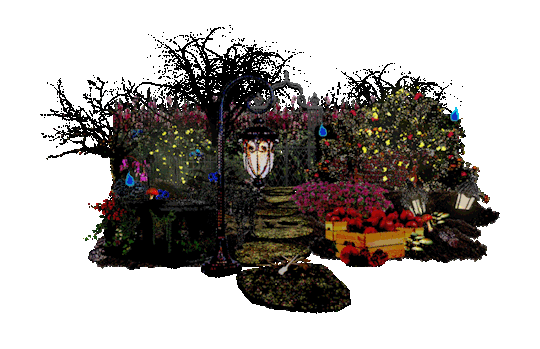
From the religious perspective, it is possible that Proserpina is a standalone, separate Deity. However, it is also possible that She was but one of the "faces" of existing Goddesses. We can speak of Libera, Primigenia, Ceres/Demeter, and even the mythical wife of Soranus, an Etruscan God of the Dead, as possible Deities to be mistaken for Proserpina.
Because there were so many Goddesses who completely encompass Proserpina's attributes and who have existed before Her cult came around, it's possible that She was a reimagination of one of the state cults. It is possible that Proserpina's myth was a political rather than religious invention because we can see that the general state of Athens did not seem to look kindly at the cults born in Sicily and Rome. Examples of this can be seen in Plutos, Mars, and Bacchus. While this is not a fact, it is a possibility.
It isn't only in Italy that this Goddess might have been but another face of an older Deity. In Greece, this might have been the case too. When referring to Demeter and Persephone, the grammatical form authors use is that which means "double Goddess" (τώ θεώ) rather than "two Goddesses" (αί θεαί).
It is completely possible that Proserpina and Demeter are the same person viewed as an allegorical set of "stages" of one's life: mature and young grain. The names of the Goddess(es) suggest trinity too: Kore (the maiden, Youth), Demeter/Ceres (the Abundant, the Mother), and Proserpina (the destroyer, Death).
After all, the stages of life as seen in the myth are parts of the natural process of aging and seasonal change in nature.

The myth of Proserpina, like any other myth, doesn't have to be taken literally. A lot of mythological stories are either cautionary tales, stories made for entertainment, or allegories to explain natural processes. Proserpina might just be a way to explain why seasons had to change, and viewing seasonal shifts through the coming of Death was something done in many cultures across the world.
It's natural for the Ancient people to view it from the standpoint of Death being unfair and cruel, too. After all, Ancient towns heavily relied on local production for survival, and losing precious grain meant a period of famine, if winter came earlier or was colder than usual, or simply strict abstaining.
Regardless, even in Antiquity Proserpina might have been more so a symbolic Deity rather than a votive figure. Alternation of summer and winter seasons and falling of nature into temporary sleep and stagnation are some of the aspects of this symbolic interpretation. Because of Her name, She was also symbolically associated with motion of growing grain that slowly crept out of the soil and towards the Sun. Interestingly, wheat was stored in containers underground, which could symbolically appease Proserpina.
Her name, sounds very much like Greek "φέρειν φόνος", which is its possible etymology as it means “bringing Death”.

We don't know much of the Eleusinian Mysteries, but some sources suggest that in Athens, the allegory of seasons changing was turned into a staged play where re-discovery of the daughter by the mother was annually performed. We only know that it involved a solemn procession that would arrive in Eleusis at night, carrying torches, and enter a cave where one of the Doors of Dis was located. Here, the "initiated ones" would perform a ritual that remains a secret even now.
Long before Eleusis gained its own cult, the rites of currently still mysterious Thesmophoria were known to the Ancients. It might have included some rituals by matriarchal communities of local women.
Some more needs to be said about how the story within this myth fits into what the Ancient peoples considered to be a natural flow of events. Plutos wasn't the only one to attempt to marry Proserpina: Apollo offered Her the island of Delos and Mars offered her the mountain range of Rhodope. However, it is Death that claimed the Maiden. Some stories suggest that Jupiter, who was Proserpina's Father, agreed to the kidnapping.
It's clear that the myth wasn't just taken directly as it is, but was also seen as a way of entertainment, as a votive subject, and a symbolical tale to describe a common natural phenomenon.

I believe it's important to note that there's no right or wrong way to view the actual myth.
For some it's a story of a grieving mother losing a child, for some it's a story of youthful curiosity leading to disaster. Some see it as a natural happening that couldn't be avoided while some see it as unfairness that comes when mortals try to perceive and accept Death.
What this myth has never been about, though, is romance. This isn't a story of love, even if love ended up happening between Plutos and Proserpina. To speak of it in these terms would be demeaning, nearly insulting, to the original story.
It's not exactly right to modernize Proserpina's story by turning it into an overlooked romanticized legend. It has never been one, couldn't be one, and shouldn't be one. If we view this legend as a story of a wrathful Mother mourning over Her Daughter, claiming that Proserpina is a winner here is to demean Demeter's grief.
I hope I managed to provide you a multi-facet view on this peculiar legend.
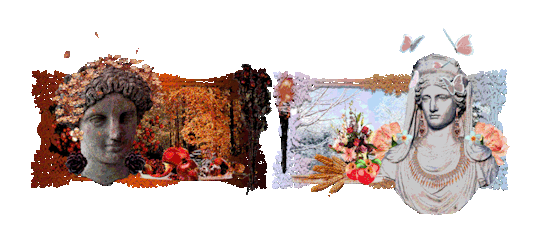
Note: T*rfs DNI. Your views are not welcome here nor will they ever be. All of the decor was made by me and @evilios.
We do not allow its usage.
Sources in my pinned.
#𓆩☠︎𓆪 ˣ 𝐒𝖙𝖞𝖌𝖎𝖆𝖓#There are many versions of the myth but Sicily where my family is from has a story of Persephone's willing descent.#I believe there were reliefs of Persephone's happy descent shared on here too.#helpol#hellenic polytheism#hellenic paganism#sicilian religion#sicilian myths#greek myths#hades deity#persephone deity#demeter deity
123 notes
·
View notes